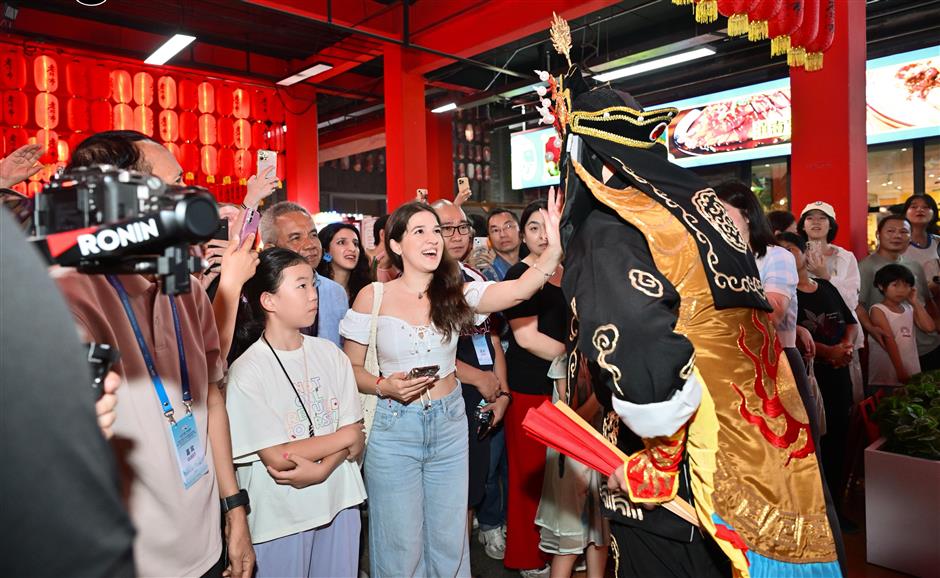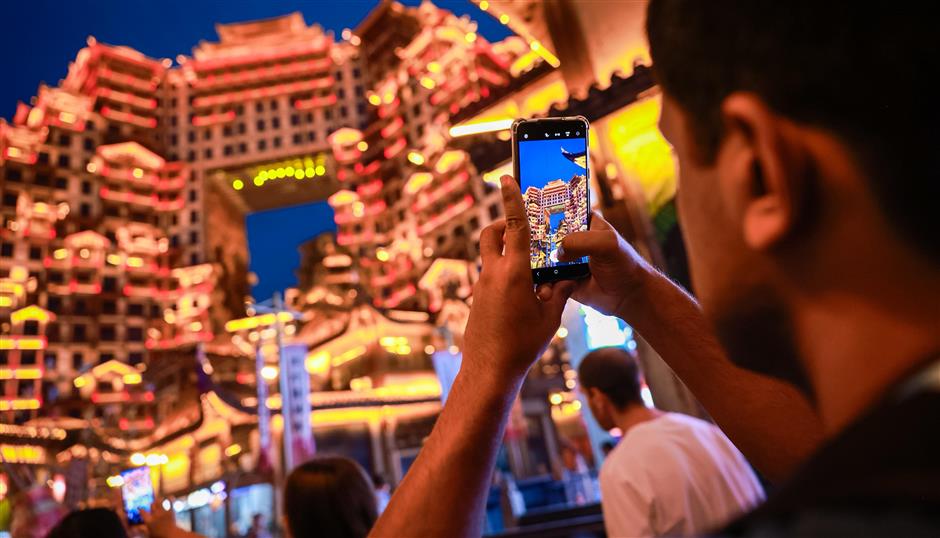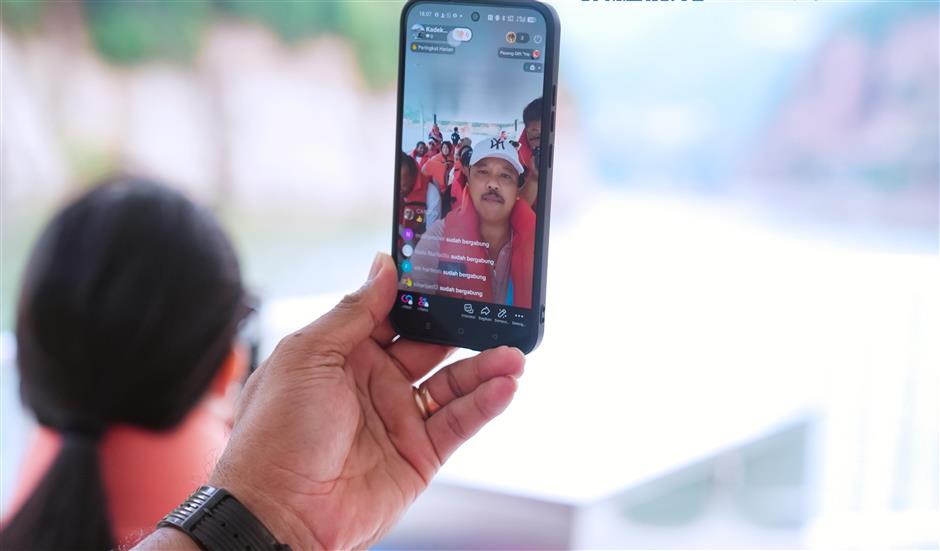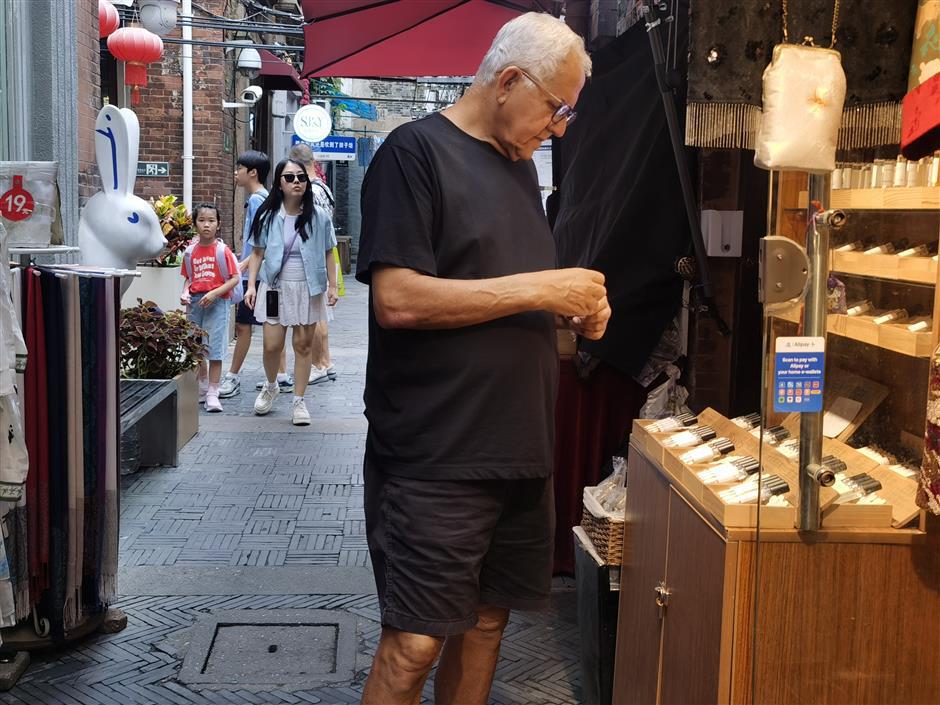Inbound tourism surges as foreigners make a beeline for China
 Representatives of Asian travel agencies interact with a face-changing performer during their recent 11-day trip to China.
Representatives of Asian travel agencies interact with a face-changing performer during their recent 11-day trip to China.Since the launch of the 144-hour visa-free transit policy for 50-plus countries, China's inbound tourism has been largely boosted by the expansion of visa-free policies and the recovery of international air routes.
Data from the National Immigration Administration showed that in the first half of 2025, the total number of inbound and outbound trips across the country reached 170 million, among them 38.05 million made by foreigners, a year-on-year increase of 30.2 percent.
In late August, more than 100 representatives of top Asian travel agencies from over 10 countries such as Japan, South Korea, Singapore and Malaysia experienced the diversity of Chinese culture on a 11-day trip hosted by the Ministry of Culture and Tourism. It covered more than 10 cities such as Huangshan, Ningbo, Dunhuang and Handan.

A foreign traveler takes nightview photos in Zhangjiajie, Hunan Province.
Foreign tourists were amazed by the face-changing performance, the profound ancient culture of the Shenyang Palace Museum in Liaoning Province, the Oriental wisdom in the thousand-year-old Tianyi Pavilion in Ningbo (Zhejiang Province), the exquisite craftsmanship of Suzhou embroidery, the martial arts at the Southern Shaolin Temple in Quanzhou (Fujian Province), and the "floating mountains" portrayed in the Hollywood blockbuster "Avatar" in Zhangjiajie (Hunan Province).
A South Korean representative posted photos of the morning mist at Hongcun Village, a UNESCO World Cultural Heritage Site, saying "every frame is like a movie," while a Malaysian representative shared the experience of "learning to bargain in Chinese for a pack of dried shiitake mushrooms."
"The stories of the Silk Road are deeply touching," said Sri Lankan travel agent Dilan.

Two travelers snap a selfie in Jinan, Shandong Province.
Overseas tourists are showing increasingly interest in China travel. From 2024 to the first quarter of 2025, the number of foreign tourists who booked flights and hotels to China through Trip.com doubled year-on-year, and orders for leisure and entertainment products even tripled.
As a key part of tourist services, the hotel industry has become a big beneficiary of the boom.
Managers of many hotels said that the number of inbound guests has increased significantly since the beginning of this year, especially from Asian countries such as South Korea, Malaysia, Japan, Thailand and Singapore.
"In July, inbound guest orders accounted for over 50 percent of our hotel's total orders," said the general manager of a four-star hotel in Shanghai.

A foreign tourist makes a livestream via an overseas social media platform.
On September 2, Shanghai-based Trip.com released its latest inbound tourism research report, revealing that tourists from major source countries such as Japan and South Korea have high praise for China's tourism sector for cultural heritage, infrastructure and security. However, issues including language barrier, and difficulties in making reservations and payment remain major drawbacks.
"Inbound tourism has huge growth potential, accounting for 1 or 2 percent of GDP," said Jane Sun, CEO of Trip.com Group. "The growth of inbound tourism will create more job opportunities for society and activate the vitality of small and medium-sized enterprises."
The report points out that Chinese scenic spots have become globally recognized in terms of "hardware," but still need to further improve "software" services to meet international standards.

A foreign tourist visits Tianzifang in Shanghai.
The convenience of public transportation such as high-speed railways and subways, as well as clean public toilets, have also been widely praised by foreign tourists.
Despite the positive feedback, the report also revealed barriers in payment as foreign users need to complete multiple verifications to connect with Alipay or WeChat Pay, and some ticket windows only support domestic payment methods.
Language service is another major issue. At present, only a few scenic spots provide multilingual signs and guided tour services in languages such as Japanese and Korean, according to the report.
Many foreign tourists can only rely on translation apps. Popular attractions such as Beijing's Palace Museum and the Panda House of Beijing Zoo currently only support reservations with Chinese ID cards. As a result, foreign tourists with passports often cannot buy tickets online and have to queue on-site or try to place orders through third-party platforms, according to the report.
Source: Shanghai Daily